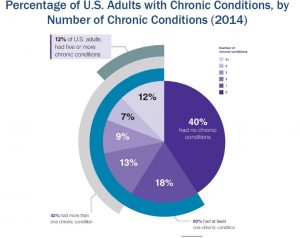New Research Highlights Communication Gap in Alcohol Consumption Policies
Introduction
Recent research conducted by psychologists, linguists, and policy experts from the University of Staffordshire, University of Liverpool, Oxford Brookes University, and London South Bank University reveals significant differences in how policymakers and the public discuss alcohol consumption. This study emphasizes the need for a revised approach to alcohol interventions and health campaigns, aligning with the Sustainable Development Goals (SDGs), particularly SDG 3: Good Health and Well-being.
Study Overview and Methodology
The research team utilized linguistic software to analyze the language used in England’s three most recent alcohol policies compared to the discourse of young adults regarding drinking habits.
Key Findings
- Differences in Framing Alcohol Consumption
- Policymakers predominantly frame alcohol use negatively, viewing it as a behavioral problem requiring correction.
- Drinkers acknowledge both negative and positive impacts of alcohol, expressing a range of emotions such as embarrassment, happiness, guilt, and sadness.
- Emotional Dimensions in Drinking Behavior
- Drinkers consume alcohol for various reasons including socializing, relaxation, coping with negative emotions, and fitting in with peers.
- Current policy messages focusing solely on consumption limits (e.g., 14 units per week) may not resonate with all individuals, potentially limiting effectiveness.
- Demographic Focus and Health Implications
- The study challenges the predominant focus on young drinkers, highlighting rising alcohol consumption among older adults.
- Older adults’ alcohol use is more closely linked to long-term health issues such as cancer and heart disease, aligning with SDG 3 targets to reduce premature mortality from non-communicable diseases.
Policy Implications and Recommendations
- Development of alcohol policies should incorporate the emotional and social contexts of drinking to enhance relevance and effectiveness.
- Engagement with drinkers in the policymaking process is crucial to ensure policies reflect real-life behaviors and motivations.
- There is a call for a new National Alcohol Strategy for England, which includes:
- Improved alcohol labeling
- Minimum unit pricing
- Marketing restrictions
- Dialogue-based approaches rather than directive messages are recommended to reduce alcohol-related harm, supporting SDG 3 and SDG 17: Partnerships for the Goals.
Supporting Data and Global Context
Alcohol consumption accounts for approximately 17,000 cancer diagnoses annually in England. The World Cancer Research Fund has petitioned for government action to implement a comprehensive National Alcohol Strategy, underscoring the global commitment to health and well-being.
Expert Commentary
“Policymakers need to construct policies that reflect the importance of emotions in drinkers’ narratives. Psychological theories suggest people drink for diverse reasons, and policy initiatives must accommodate these motivations to be effective,” stated Richard Cooke, Professor of Health Psychology at the University of Staffordshire.
“Most people in England drink within guidelines, so acceptable messages that fit with people’s lives are essential. Policymakers should engage with drinkers to understand their experiences and preferences, moving beyond an exclusive focus on harm,” he added.
Conclusion
This study advocates for a paradigm shift in alcohol policy development, emphasizing inclusive dialogue and emotional understanding to better address alcohol-related harms. Aligning with the Sustainable Development Goals, particularly SDG 3 and SDG 17, the research supports collaborative efforts to promote health and well-being through effective, evidence-based strategies.
References
- Moreton, E., et al. (2025). The language of alcohol: Similarities and differences in how drinkers and policymakers frame alcohol consumption. Drug and Alcohol Review. doi.org/10.1111/dar.14056
- Staffordshire University News Release

1. Sustainable Development Goals (SDGs) Addressed or Connected
- SDG 3: Good Health and Well-being
- The article focuses on alcohol consumption and its health impacts, including cancer and heart disease, which directly relate to ensuring healthy lives and promoting well-being.
- SDG 12: Responsible Consumption and Production
- The discussion on alcohol consumption behaviors, policy interventions, and the call for improved alcohol labelling and marketing restrictions align with promoting responsible consumption.
- SDG 17: Partnerships for the Goals
- The article emphasizes the need for dialogue between policymakers and drinkers, highlighting the importance of partnerships and inclusive policymaking.
2. Specific Targets Under Those SDGs Identified
- SDG 3: Good Health and Well-being
- Target 3.4: By 2030, reduce by one third premature mortality from non-communicable diseases through prevention and treatment.
- Target 3.5: Strengthen the prevention and treatment of substance abuse, including harmful use of alcohol.
- SDG 12: Responsible Consumption and Production
- Target 12.8: By 2030, ensure that people everywhere have the relevant information and awareness for sustainable development and lifestyles in harmony with nature.
- SDG 17: Partnerships for the Goals
- Target 17.17: Encourage and promote effective public, public-private and civil society partnerships.
3. Indicators Mentioned or Implied to Measure Progress
- Indicator for Target 3.4 and 3.5:
- Prevalence of alcohol consumption and related health outcomes such as incidence rates of alcohol-related cancers and cardiovascular diseases.
- Measurement of alcohol-related harm reduction through policy effectiveness, e.g., changes in drinking behaviors and adherence to guidelines (e.g., 14 units per week).
- Indicator for Target 12.8:
- Availability and effectiveness of alcohol labelling, marketing restrictions, and public awareness campaigns.
- Public understanding and attitudes towards alcohol consumption as measured through surveys or linguistic analyses.
- Indicator for Target 17.17:
- Level of stakeholder engagement in policymaking processes, including participation of drinkers in policy discussions.
- Number and quality of partnerships formed between government, researchers, and civil society to address alcohol-related harm.
4. Table of SDGs, Targets, and Indicators
| SDGs | Targets | Indicators |
|---|---|---|
| SDG 3: Good Health and Well-being |
|
|
| SDG 12: Responsible Consumption and Production |
|
|
| SDG 17: Partnerships for the Goals |
|
|
Source: news-medical.net







